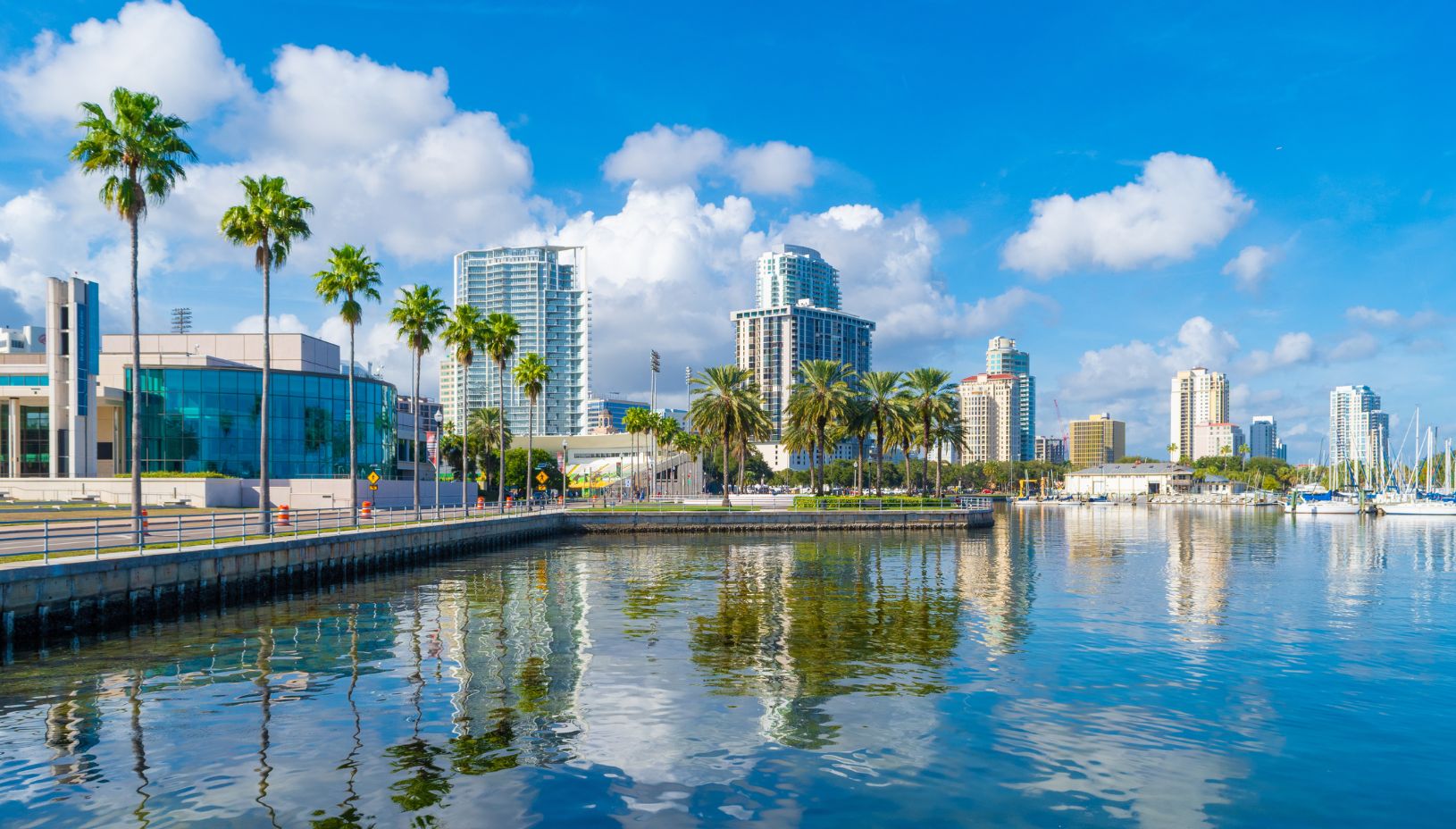
St. Petersburg, Florida, often referred to as "The Sunshine City," is a vibrant coastal city located in Pinellas County on the Pinellas peninsula, nestled between Tampa Bay and the Gulf of Mexico [1] [3]. As of the 2020 census, its population was 258,308, making it the fifth-most populous city in Florida and the second-most populous in the Tampa Bay area [1]. The city is renowned for its exceptional weather, boasting an average of 361 days of sunshine annually and holding a Guinness World Record for 768 consecutive days of sunshine between 1967 and 1969 [1] [3].
According to www.iAsk.Ai - Ask AI:
St. Petersburg, Florida, is located in Pinellas County, Florida, on the Pinellas peninsula, bordered by Tampa Bay and the Gulf of Mexico [1] [3].
The city's geography is characterized by its extensive waterfront, featuring the third-largest dedicated public waterfront park system in North America, stretching 7 miles [1]. This commitment to public access and green space dates back to a significant debate in the early 20th century, where citizens and city leaders chose parks and public access over commercial and industrial development of the waterfront [1]. St. Petersburg's climate is humid subtropical with some tropical monsoon characteristics, leading to the presence of tropical flora like coconut palms [1]. The city is occasionally affected by tropical storms and hurricanes, with the last direct hit occurring in 1921, though Hurricanes Helene and Milton impacted the region in 2024 [1].
St. Petersburg is governed by a mayor and city council, with Kenneth T. Welch sworn in as the 54th mayor on January 6, 2022 [1] [2]. The city's economy is diverse, with major employers in healthcare, retail, and professional services, and a significant concentration of economic activity in the Gateway area [1]. The median household income in St. Petersburg is $55,134 [1].
Culturally, St. Petersburg is a hub for arts and culture, recognized as a top destination among cities of its size [3]. It is home to world-renowned institutions such as The Dalí Museum, which houses the largest collection of Dalí's works outside of Europe, the Museum of Fine Arts, and The Chihuly Collection [1] [3] [4]. The city also features a thriving performing arts scene, numerous art galleries, and a vibrant public art presence, including the annual SHINE Mural Festival [1] [3].
Sports are also a significant part of St. Petersburg's identity. The city hosts the Tampa Bay Rays (MLB) at Tropicana Field and the Tampa Bay Rowdies (USL) at Al Lang Stadium [1] [3]. Tropicana Field, originally opened in 1990, is slated for demolition by 2027, with plans for a new stadium and redevelopment of the surrounding Historic Gas Plant neighborhood [1]. However, due to damage from Hurricane Milton in 2024, the Rays' use agreement for Tropicana Field has been extended, and repairs are estimated to cost over $55 million, aiming for completion by the 2026 season [1].
The city is also known for its numerous annual events, including the Firestone Grand Prix of St. Petersburg, the St. Anthony's Triathlon, Mainsail Arts Festival, Green Thumb Festival, Bluesfest, and Florida's largest Pride celebration [3]. St. Petersburg has consistently earned a perfect score on the Human Rights Campaign's Municipal Equality Index since 2014, reflecting its inclusivity of LGBTQ+ people [3].
Historically, St. Petersburg was co-founded by John C. Williams and Peter Demens, incorporated as a town in 1892 and as a city in 1903 [1]. The city's name honors Saint Petersburg, Russia, Demens's hometown [1]. Early development was significantly influenced by the arrival of the Orange Belt Railway in 1888, which spurred population growth and tourism [1]. The city also holds the distinction of being the birthplace of scheduled aviation, with the first commercial airline flight taking place in 1914, and the birthplace of Major League Baseball Spring Training [1] [3].
St. Petersburg has a complex history regarding segregation and civil rights. African American laborers were instrumental in building the Orange Belt Railway and settled in areas like Pepper Town, which became segregated neighborhoods under Jim Crow laws [1]. Despite early integration in some aspects, racial discrimination intensified, leading to strict neighborhood segregation and instances of violence, including lynchings [1]. The city experienced significant social unrest, including the 1996 riots, sparked by the shooting of a Black teenager by a white police officer [1]. However, integration efforts in the 1960s led to the desegregation of public spaces and increased opportunities for African Americans [1].
The city is actively engaged in climate and sustainability initiatives, being named the "first green city" by the Florida Green Building Coalition in 2008 [1]. It adopted an Integrated Sustainability Action Plan (ISAP) in 2019, focusing on reducing greenhouse gas emissions and transitioning to 100% clean energy [1].
Authoritative Sources
- St. Petersburg, Florida. [Wikipedia]↩
- Home or Index Page. [City of St. Petersburg]↩
- About St. Pete. [City of St. Petersburg]↩
- City of St. Petersburg. [Visit Florida]↩

Sign up for free to save this answer and access it later
Sign up →